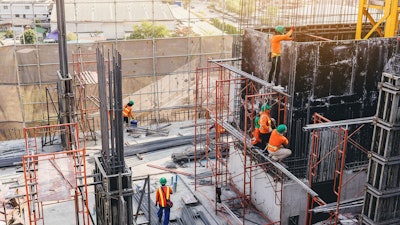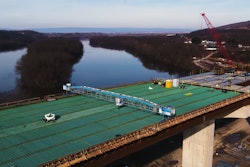
With labor shortages, supply chain interruptions and other serious issues currently challenging our industry, it has never been more important for construction companies to track productivity. Understanding a team’s capabilities helps contractors work faster and smarter.
However, capturing the right data from the field to accurately assess the way your crew works and using that information to make process improvements is a challenge itself, one that can be prohibitively time consuming—especially without digital tools and technology.
Why are production insights important? The goal of collecting production insights is to improve profitability. Managers should keep the following tips in mind to establish an easy, effective reporting system.
1. Improved Bid Accuracy
Imagine planning a project with no information about the contractors who will be completing the work onsite. It's nearly impossible to set realistic deadlines and determine a reasonable labor budget when you have no idea what kind of productivity to expect. Seasoned project managers will be able to make educated guesses based on experience, but a bid created without any historical data is essentially a shot in the dark.
While working with the same crew for a significant period of time will naturally provide some insight into their capabilities, when project managers and other stakeholders don’t track productivity in an official, organized way, they miss out on the greatest opportunity to improve bid accuracy and reduce the chance of disputes.
The more you know about the actual number of hours and workers it takes to complete specific tasks—and the more you understand how your crew responds to certain challenges—the better and more accurate your project planning will be. That level of knowledge only comes with dedicated (and detailed) productivity tracking.
2. Informed Decision Making
In addition to better bids, productivity tracking helps managers and company stakeholders make more informed business decisions. This includes decisions related to general operations, like hiring and training, as well as scope changes on specific projects.
Using accurate production insights, project managers can trace any schedule delays or budget increases back to the source with real data from the field. They can more easily assess when and how issues occurred and make changes to prevent them in the future. They’ll be more adaptable, catching safety or quality concerns early. They can potentially make minor adjustments in time to prevent avoidable scope changes in the first place or prove to clients when the reason behind a delay was unpredictable.
Productivity tracking also highlights inefficiencies and will demonstrate where process improvements can be made. For example, if too many hours are consistently logged on specific tasks, managers can review production insights and decide if they need to schedule more laborers for that type of work or invest in tools that will make that job easier for crew members.
How can a construction business improve production tracking? Both the field and office play a part in ensuring the success of production tracking efforts. Field contractors must collect accurate data and share it with the office in a timely manner, while project managers and other stakeholders who may not be onsite each day are generally responsible for reviewing reports and providing feedback.
When considering ways to improve your production tracking procedures, the needs of all employees should be taken into consideration. Digital reporting tools are often a beneficial solution for both the field and office.
3. Digital Production Tracking for Field Crews
It can be difficult for field crews to capture and share detailed data from the jobsite when their days are already full of project-related tasks. Luckily, modern technology like digital production tracking software helps onsite contractors quickly and consistently capture productivity data.
Pen and paper reporting simply cannot provide the same level of detail and accuracy as digital reports do. Not only do handwritten reports take more time to complete, they also often lead to communication errors and misinterpretations. Handwriting can be difficult to read, and if crew members are in a rush because they are focused on project tasks, they may forget to include vital information, write too messily, or use confusing shorthand.
With digital tools, field contractors can record data quickly, easily, and consistently through mobile devices. They can use report templates or checklists to eliminate guesswork and use voice-to-text or photo and video capture capabilities to provide clearer, higher quality data than they could using pen and paper, and they can do so in much less time.
Digital tools also help field contractors share production data with the office without the need for them to hand in reports in person or compose text or emails. Many systems use cloud storage, meaning report data is shared with all stakeholders as soon as it’s uploaded.
4. Digital Production Tracking for Office Teams
Likewise, with pen and paper reporting, busy project managers may not have the time to translate and organize daily report information in a way that actually provides actionable insight. The consistency and level of detail provided with digital reports helps office stakeholders make the most of production tracking.
When reports are templated and already digitized, project managers don’t need to spend time on manual data entry or translation. Using templates and checklists, they’ll be able to establish firm guidelines for reporting and can ensure their field crews are collecting the most useful information.
Digital reporting often can automate organizational processes, and reports can be published in a standardized, professional format that is easily shared and analyzed. Some software even provides specialized views for production insights, automatically collecting data from reports and arranging it into graphs, percentages or other formats that clearly show progress across different areas.
Being able to easily find and reference both current and previous project information—including granular details about work hours, materials, the number of laborers, and any scope changes—is key to effective project planning. Because digital reports can be stored in organized file systems on the cloud instead of in filing cabinets, project managers, accounting professionals and other office-based teams can quickly access them and review historical data for planning purposes.
Detailed production insights greatly improve profitability, and digital production tracking tools can be a wise investment for construction companies of all sizes. If your goal is to enhance visibility for your field and office teams and increase overall profitability, consider digital reporting software to make a real difference.




















